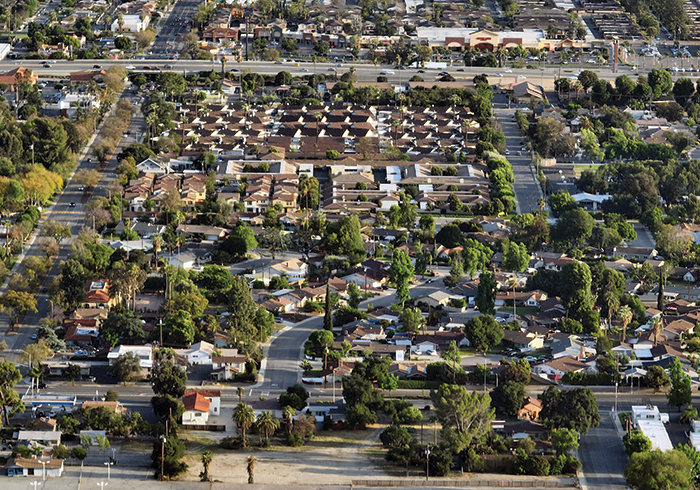Housing element approved; what is it, anyway?

by Steven Felschundneff | steven@claremont-courier.com
Early Wednesday morning the Claremont City Council approved the long overdue housing element, ending a monthslong effort to update this important part of the city’s general plan.
If you are a regular at city meetings, the housing element and its role in planning for future development may be old news. For everyone else the whole process may seem confusing, overly complicated, and even burdensome. In all fairness, some who are very familiar with the housing element process may also find it overly complicated.
The following is an explanation of the key portions of the housing element and how it applies to future building in Claremont.
“California State law mandates that all cities and counties adopt a comprehensive, long-range planning document that establishes the future ‘vision’ for each community’s development, and guides future development and long-term growth,” according to a city planning staff report. “This planning document is known as the General Plan and acts as the community’s ‘constitution’ covering seven required topic areas that are each addressed in individual ‘elements’ of the General Plan.”
The general plan’s seven elements include: land use, circulation, housing, conservation, open space, noise, and safety. Housing is unique among the other “elements” because state law dictates it must be updated every eight years. The current update, which covers October 2021 to October 2029 is called the “sixth cycle.”
The housing element update begins with the California Department of Housing and Community Developmentcalculating the amount of housing needed across the state to ensure adequate supply. In a process known as the Regional Housing Needs Assessment, often abbreviated RHNA (colloquially referred to as and pronounced “REE-na”), each city, including Claremont, receives an allocation from the state, a quota for how many new housing units a city needs to plan to build.
As part of the housing element update, Claremont must create an inventory map of available sites, which lists every property that could reasonably be developed into housing. The Department of Housing and Community Development does not require these properties be vacant land, which is why many of the “opportunity sites” in Claremont’s draft update are already in use.
Cities also have to show the proposed housing could be built. As such, Claremont must show a willingness to accommodate more housing, including allowing homes in commercial areas, approving amendments to land use plans, and changing local zoning to allow for higher density.
Unlike previous updates, the state now includes existing housing needs along with population changes when calculating its RHNA. The change aims to account for overcrowded households and those where residents are “cost burdened,” spending more that 30% of their income on housing.
Thirty-three percent of Claremont households report being housing cost burdened, including 50% of the city’s renters and 25% of homeowners.
Claremont must plan for 1,711 housing units this time around compared with just 373 during the previous cycle. Claremont’s RHNA allocation includes 556 extremely low-income units, 310 low income, 297 moderate income, and 548 above moderate.
According to projections for the sixth cycle, Claremont will do just fine satisfying the above moderate income, or market rate, housing requirement in RHNA. Where the city falls short is in providing affordable housing, with an estimated 1,024 unit shortfall. This puts pressure on the city’s planning staff to find parcels that could be rezoned to allow for a mix of housing types, including high density affordable housing developments.
Over 50% of the city’s land area is zoned for something other than housing, including 9% institutional, 13.61% either public or resource conservation, and 31% encompassing the Claremont Hills Wilderness Park. The housing element’s 31 opportunity sites include 44 parcels, 27 of which have been slated for some type of rezoning.
To offset the possibility that one or more sites will fall short of the proposed density, the city established a 15% buffer above its 1,711 unit RHNA allocation to satisfy the “no net loss” requirement under state law.
“The housing element itself does not create residential growth nor does it include a mandate that owners of the property zoned for housing develop it for housing,” according to a staff report. “But we have a legal obligation to ensure the availably sites at adequate densities and appropriate development standards to accommodate that RHNA.”
An important component of the housing element is the state’s mandate to adhere to the tenets of AB 686, the Affirmatively Furthering Fair Housing act. The law says Claremont must demonstrate how it will take “meaningful actions that overcome patterns of segregation and foster inclusive communities free from barriers that restrict access to opportunities,” according to the city.
The new requirements made drafting the document more difficult and contributed to the nearly the 20-month delay in Claremont’s approval of its housing element. Claremont is not alone; an estimated 47% of jurisdictions in Southern California are out of compliance, according to a staff report.
Because Claremont had been out of compliance with its housing element for so long, the city was sued last year by Californians for Homeownership in an effort to force it to get the document approved. That suit was settled earlier this year, but a resulting judgment meant Claremont had to adopt its housing element by the end of this month.
The housing element has been through several drafts, including review by the public and state housing authorities. The current version should satisfy the Department of Housing and Community Development’s requirements just before the coming deadline.










0 Comments